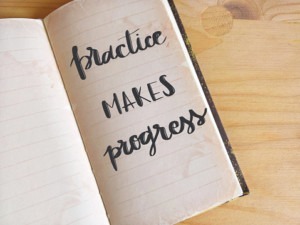Grace Hill Training Tip of the Week
Practicing Compliance
Can you imagine how delighted you’d be if all of your employees were compliance experts? Studies of top performers in music, chess, and sports point to the importance of practice in the development of expertise. With most skills in life, if you want to be great, you have to practice. But how does one practice compliance?
As trainers, we sometimes fall into the “check the box” mindset. We are happy when all employees take their fair housing or harassment training once a year. Deep down, though, we know it takes more than that to be really good at compliance. It takes practice.
How can you create meaningful compliance practice initiative? Here are some tips!

Make a practice plan. Create an initiative around compliance practice. For example, create monthly compliance refreshers where employees get a few scenario-based questions to answer. Build a course in Vision X to deliver and score the questions. Create a little competition and make it fun. Set up a simple leaderboard or acknowledge participating employees in a company-wide email or with a few words at a team meeting. You might be surprised what some healthy competition can do.
Focus on meaningful, relevant scenarios. Use realistic scenarios and decisions that employees will encounter on the job. Making the practice scenarios relevant will ensure employees don’t feel they are wasting their time. Use your experience to generate real scenarios, but also scan HUD, EEOC or state agency websites for important compliance news, recent claims and court decisions. These are great for developing scenarios.

Create a safe space. In job training contexts, practice allows learners to succeed or fail in a safe, low-stakes environment. When presenting practice activities to employees, don’t penalize them for getting things wrong. People need to feel like they can try and fail without being afraid of consequences or feeling bad. Let them know that practice is low stakes because the high stake part is on the job!
Practicing compliance strategies will not only keep things fresh in employees’ minds, but will allow them to apply their knowledge to novel situations in order for them to go beyond memorization to understanding. This is when you will start to see behaviors change on the job, which is what training is all about.


 Customer Support
Customer Support




